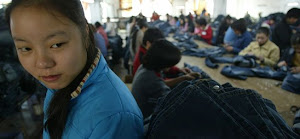Films
Bakker, Jaqueline.(2001)Changing paths: female circumcision in Mali. Mali: Fatusch Productions.
Joahansson, Mats Billberg. (1999) Hedersmord. Jordan: Sveriges Television (SVT)
Keshavarz, Maryam (2005) The Color of Love. Iran: Marakesh Films.
Osbourne, Ellen and Maureen Gosling. (2000) Ramo de Fuego. Mexico: New Yorker Films
Peled, Micha X. (2005) China Blue. China: Teddy Bear Films and the Independent Television Service (ITVS).
Salas, Laura and Tamaryn Nelson. (2005) Dual Injustice: feminicide and torture in Ciudad Juarez and Chihuahua. Mexico: Comisión Mexicana de Defensa y Promoción de los Derechos Humanos and WITNESS.
Weyer, Hannah, Jim McKay, & Hannah Weyer. 2000. La Boda. United States: C-Hundred Film Corp. Women Make Movies.
Print Resources
Ferguson, Ann. “Resisting the Veil of Privilege: Building Bridge Identities as an Ethico-Politics of Global Feminism” Decentering the Center: Philosophy for a Multicultural, Postcolonial, and Feminist World. Uma Narayan and Sandra Harding. 2000 Bloomington. Indiana University Press. 189-207
Jaggar, Alison M. “Globalizing Feminist Ethic” Decentering the Center: Philosophy for a Multicultura, Postcolonial, and Feminist World. Uma Narayan and Sandra Harding. 2000 Bloomington. Indiana University Press. 1-25
Mason, Carol. “The Hillbilly Defense: Culturally Mediating U.S Terror at Home and Abroad”. NWSA Journal. 2005 Vol. 17 No. 3
Narayan, Uma. “the Essence of Culture and a Sense of History: A Feminist Critique of Cultural Essentialism” Decentering the Center: Philosophy for a Multicultural, Postcolonial, and Feminist World. Uma Narayan and Sandra Harding. 2000 Bloomington. Indiana University Press. 80-100
Okin, Susan Moller. “Feminism, Women’s Human Rights, and Cultural Differences” Decentering the Center: Philosophy for a Multicultural, Postcolonial, and Feminist World. Uma Narayan and Sandra Harding. 2000 Bloomington. Indiana University Press. 26-46
Stern, Maria. “’We’ the Subject: The Power and failure of (In) Security”. Security Dialogue. Vol. 37(2): 187-205.
Vickers, Jill. “Feminists and Nationalism.” Gender, Race and Nation: A Global Perspective. Vanaja Dhruvarajan and Jill Vickers. 2002 University of Toronto Press Inc. 247-272
Vickers, Jill. “Thinking about Violence.” Gender, Race and Nation: A Global Perspective. Vanaja Dhruvarajan and Jill Vickers 2002. University of Toronto Press Inc. 222-246






